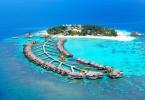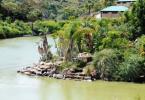The Gulf of Thailand is a shallow part of the South China Sea. The area of the Gulf of Sias is approximately 462 thousand km2, the average depth is 45.5 m. East End The Gulf of Thailand is characterized by greater shallow water and a smoother underwater relief than the western part with rocky steep banks. The maximum depth of the central depression extending up to c. sh., 83 m. The Gulf of Siam along the border with the South China Sea has a width of about 370 km, but water exchange with the South China Sea is carried out to a depth of more than 50 m along a trough only 56 km wide. This trough runs between a 30-meter rise extending southwest from Cape Kamau and a 50-meter ridge extending NE from Kota Bharu. Four major rivers, the largest of which is the Menam River. In addition, several smaller rivers also flow into the Gulf of Thailand from both sides.
Hydrological regime
The Gulf of Thailand can be considered as a two-layer shallow estuary. In the upper layer of the Gulf of Thailand, there is a flow of low-salinity water directed to the sea, freshened by intense precipitation and river runoff.The average salinity of surface waters is 30.5–32.5 ppm. in winter and 31.0-32 p.m. in summer. The counter flow of waters from the South China Sea passes over the threshold of the trench (depth 58 m). These waters have salinity above 34.0 ppm. and a relatively low temperature - below 27.0 ° C. They fill the deep-sea central depression approximately below the horizon of 50 m. arrows, but in autumn and winter, directly at the entrance to the Gulf of Thailand, their direction is south, and in the central part of the Gulf of Thailand - clockwise.
However, neither the northeast nor the southwest monsoon (for winter and summer, respectively) are constant either in speed or direction during the season. The combined effect of various winds, tidal currents, freshwater runoff and abundant precipitation creates localized zones of divergence and convergence in the Gulf of Thailand. In divergence zones, deep water rises, characterized by low temperature, high salinity and low oxygen content, while in convergence zones, surface water sinks, characterized by high temperature, low salinity and high oxygen content. The temperature of surface waters reached its maximum values in April: more than 31°C in the eastern and 30–31°C in the central and western parts of the Gulf of Thailand. low temperatures celebrated in January. The maximum salinity of the waters of the central part of the Gulf of Thailand was observed in August, the minimum in October.
Productivity in the Gulf of Thailand is higher than in the eastern part of the South China Sea and in the Philippines and the Sulawesi Sea. The productivity of the surface layers of the Gulf of Siam is 1–2 g C/(m2 day) in the central part and 6 g C/(m2 day) in the northern part, while the rest of the water area is less than 0.5 g C/(m2 day). The high productivity of the waters of the Gulf of Thailand is explained by vertical mixing and the rise of deep waters containing nutrients.
Tides and tidal currents in the Gulf of Thailand
In the South China Sea, there is a semidiurnal tide wave propagating to the SW; the time of its propagation from the edge of the Sunda shelf to the coast of the Malay Peninsula is about 8 hours. One part of this wave enters the Gulf of Thailand and the other goes south to the arch. Riau. The wave entering the Gulf of Thailand forms an amphidromic system centered at Panjang Island with clockwise rotation. The wave amplitudes in the amphidromic area, which covers three-quarters of the southern part of the Gulf of Thailand, are less than 80 cm. In the northern part of the Gulf of Thailand, the wave from the amphidromic area moves to the north. north coast Gulf of Thailand at the mouth of the Menam River. A diurnal tide wave moving south in the South China Sea has a much greater speed than a semidiurnal tide wave. The period of its propagation from the Sunda shelf to the coast of the Malay Peninsula is only about 2-3 hours. Near the Malay Peninsula, this wave is divided into two parts, just like the semidiurnal wave. A wave entering the Gulf of Thailand forms an amphidromic system with counterclockwise rotation; this amphidrome is located to the west of the semidiurnal tide amphidrome point. The amplitude of this wave in the amphidromic region, covering two-thirds of the southern part of the Gulf of Thailand, is less than 40 cm and reaches its maximum values (113 cm) at the mouth of the Menam River. The tidal currents of the Gulf of Thailand are relatively strong, with speeds exceeding one knot in many places.Climate in the Gulf of Thailand
The climate of the northern and southern parts of the Gulf of Thailand is not the same. In the northern reaches, in Bangkok, the total annual rainfall is 1307 mm. The rainy season lasts from May to October, with maximum rainfall (300 mm) in September; the rest of the year is characterized by a small amount of precipitation, with a minimum value (3 mm) in January. The minimum humidity (70%) is observed in January and the maximum (85%) - in September. The air temperature is minimum (26°C) in January and maximum (30°C) in April. In the southern part in the Kuala Terengganu region, the annual rainfall is 2826 mm, with a monthly maximum (760 mm) in November and a minimum (110 mm) in April. The rainy season lasts from October to January. Humidity is slightly higher than in Bangkok, with a maximum (88%) in November and a minimum (82%) in June.
The annual air temperature amplitude here is less than in Bangkok, with a maximum (27°C) in May and a minimum (25°C) in February. The strength of the southwest monsoon of the South China Sea from May to September over the Gulf of Thailand is less than 3 points. In October, when the northeast monsoon begins to blow over the South China Sea, the winds over the Gulf of Thailand have a southerly and southeasterly direction and carry moist air to the shores of the Gulf of Thailand. In January and February, over the northern part of the Gulf of Thailand, the wind blows from B and carries dry air, while over the southern part of the Gulf of Thailand it has a northeasterly direction and brings humid air. In April, the surface wind in the southern part of the Gulf of Thailand is characterized by divergence and the amount of precipitation here is insignificant compared to other months.
Pattaya or Phuket? Geography solves this dilemma. Thailand is washed by two oceans - Pacific and Indian, two seas - Andaman and South China, on different coasts of which the most famous resorts of the Kingdom are located.
On the invisible border of the Pacific and Indian Oceans with an endless number of uninhabited islands and with 80 islands that have names, the Kingdom of Thailand is located on two large peninsulas of Indochina.

Outside of Thailand - only the ocean expanse. Andaman Sea and South China open seas like part of the ocean. And not closed, like the Black Sea, surrounded by land. Therefore, lying on the beach, it is pleasant to realize that in front of you is the ocean, Pacific or Indian.
- Malaka Peninsula - washed by the Andaman Sea on the western side indian ocean
- The Siamese peninsula is the shore of the Gulf of Thailand in the South China Sea of the Pacific Ocean.
The coast of the Andaman Sea - Phuket Island, Krabi Province, Phang Nga Province, and at the southernmost tip - the provinces of Trang, Satun, Nakhon Si Thammarat.
The Gulf of Thailand of the South China Sea is the entire eastern coast of Thailand - Pattaya, Sattahip, Rayong, Hua Hin, Koh Samui, Koh Chang, Koh Sichang, Koh Lan, Trat province.
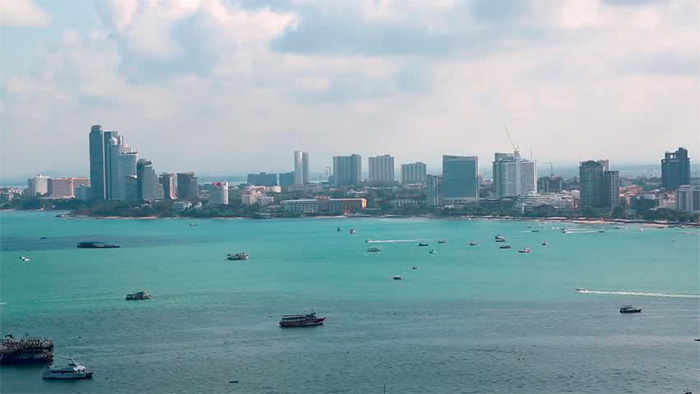
Bangkok, Pattaya and Hua Hin are located on the mainland of the Kingdom, with a drier climate, not affected by tropical storms.
The crushing force of hurricanes born in the Pacific Ocean simply does not reach the mainland coast of the Gulf of Thailand.
But at the same time, Pattaya is deprived of the breeze that blows through Phuket and the islands of Thailand on any of its shores.

The city of love, Pattaya can be proud of the most beautiful sea sunsets, but the sedate Hua Hin is illuminated by the first rays of the sun rising from the sea. The two resorts are located on opposite shores of the Gulf of Thailand of the South China Sea.
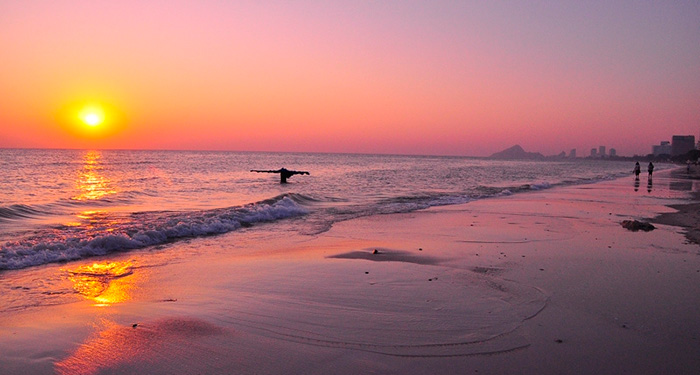
What about Phuket? And Phuket will show you everything you want - sunrises, sunsets ... This is an island after all.

Thanks to this special geographic location, Thailand has the most favorable climatic conditions in the world - away from the "ring of fire", covered from the storms of the Pacific Ocean and 1.5 thousand km from the equator.

The average annual air temperature in Thailand is +28°C, the same average annual water temperature in the Gulf of Thailand and the Andaman Sea is +28°C.
This is the most comfortable water temperature for a beach holiday for both adults and children. For comparison, the water temperature in Bali is +23°C, the cold currents of the Atlantic make it cool.

Thanks to the excellent climate, Thailand has 365 days a year for a beach holiday. Due to the peculiarities of the surface of the earth in this part of the planet, Thailand has the best, most diverse beaches.

Phuket is unique in that the island has all kinds of beaches that exist on the planet - from white, soft as flour and creaky as snow, to beaches with golden sand, with large boulders or completely covered with the same black pebbles.
Rainy season or monsoon season

The monsoon season begins to be felt from the end of spring, when the winds (monsoon) blowing from the Indian Ocean make the air more humid and bring more rain to the coast. This period will last until mid-autumn.
At the change of seasons - the beginning and end of the monsoons, more showers and thunderstorms that tropical storms bring.
Tropical storms that are frequent in summer time in the Pacific Ocean, do not significantly affect the weather in the Gulf of Thailand.
Hot Thailand is popular among tourists as a place for active summer holidays. Guests of the kingdom enjoy diving, snorkeling and swimming in the warm coastal waters of the seas. That is why, going on vacation to Phuket, Koh Samui or Pattaya, tourists first of all try to find out which sea in Thailand is best for them.
As you know, the shores of the kingdom are washed by two seas, and since these seas are open, then by two oceans: the South China, which in turn flows into the Pacific Ocean and the Andaman Sea - the Indian Ocean. Both of them are suitable for swimming throughout the year. But the longest period, from November to May, is best suited for these purposes.
andaman sea
Being part of the Indian Ocean, this sea washes several islands at once: Sumatra from the south, Nicobar and Andaman - in the west, Mallaka and Indochina in the east. Average depth reservoir is about a thousand meters. The deepest point goes under water at 4507 m.
This sea for Thais has always been one of the main sources of income. Fishing has been well developed there since the 80s of the last century. But the main money for the country still comes from the tourism industry, as well as oil and gas extracted from the bottom of the Gulf of Thailand.
✑ The Andaman Sea is located in the northern part of the Indian Ocean
The Andaman Sea, as a rule, attracts a huge number of divers. This is not surprising, given the diversity of its underwater world. The snow-white sand at the bottom of the reservoir is covered with fragments of corals, rocks and bright sponges. Also, sailing past some rocks, you can see the entrance to the caves, which are great for cave diving. Lobsters, lobsters, sea turtles, jellyfish, crabs and snakes live among all this beauty. But even more amazing creatures that can be found here are Irrawaddy dolphins.
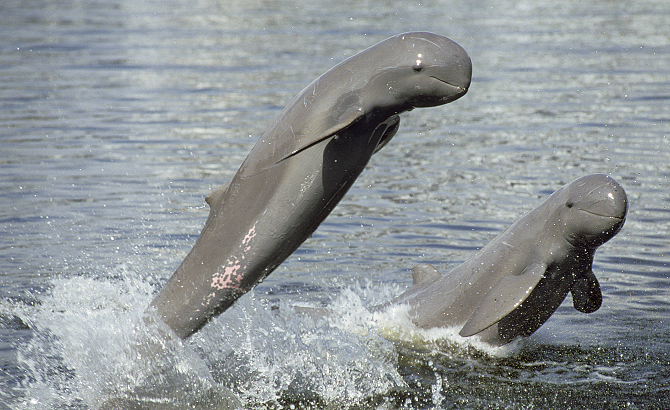
✑ In Thailand, the Irrawaddy dolphins have been under royal protection since 2001.
One of the best places for divers in this sea is Phuket. There are a lot of diving centers in Phuket, where you can learn this skill, even without knowing anything initially. Entertainment in Phuket is not cheap, but at the same time their price is justified.
Gulf of Thailand
Part of the South China Sea, washing the coast of Thailand, falls on the Gulf of Thailand. It acts as a kind of dividing line that runs between Indochina and Malacca. The waters of the bay are connected to two rivers flowing in Thailand: Tapi and Chao Phraya. Along the entire bay there is a huge number of small continental islands.
It is worth noting that compared to the Andaman Sea, the bay is very small. The average depth there is 10-15 meters. The waters of the bay are very warm, which affects its underwater world. Such an environment is good for coral reefs, but due to rising water temperatures, they have recently been massively dying off. On this moment rare representatives of this species can still be found off the coast of Thailand, but soon the situation may change for the worse.
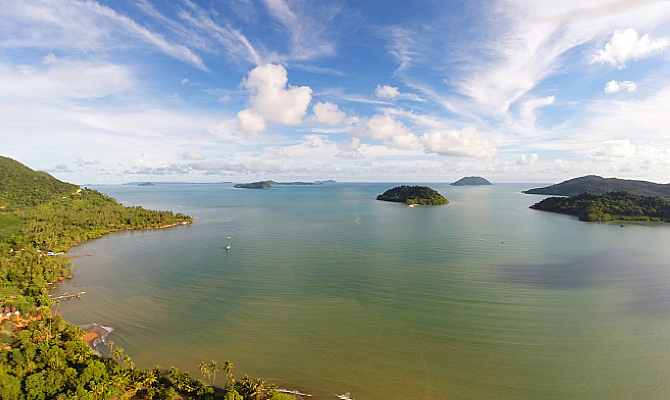
✑ Paradise places of the Gulf of Thailand
The Gulf of Thailand is very beautiful, both live and in the photo. Its clear waters, depending on weather conditions, shimmer with different shades of blue, green, and sometimes even purple. Even more bright colors are added by multi-colored fish swimming by in flocks. In addition to these tropical inhabitants of the underwater world, you can also find sardines, rays, tuna and even large fish like sharks and whales. The waters of the Gulf of Thailand are ideal for snorkelers and lovers of beautiful photos against the backdrop of the sea horizon.
Which sea to choose for divers
Beginners and experienced divers are always wondering which sea in Thailand to choose for diving. The ocean is generally preferred only by those who are quite confident in their ability to dive. Traditionally, it is believed that the Gulf of Thailand is more suitable for beginners. The most popular places for beginners are Pattaya and Koh Samui. For experienced divers, the Andaman Sea is much more suitable. In it, the salt concentration is much lower, so there are fewer problems with diving. In addition, it is much deeper than the bay and there you can find a lot of interesting places for research. But this, at the same time, makes the sea more dangerous. Internal waves, undercurrents make every swim a cartoon adventure.

✑ Underwater world of the Gulf of Thailand
The best places for swimming
In the Andaman Sea best island for swimming is the island of Phuket. The beach area in Phuket is well-groomed, and the waters are crystal clear. In addition, Phuket can offer tourists a lot of entertainment. Among the territories washed by the Gulf of Thailand, one of the largest resorts in Thailand - Pattaya is no less popular.
The sea in Pattaya, due to the abundance of tourists, of course, is not as clean as it might seem in the photo, but it is quite possible to relax there no worse than in the waters of the ocean.
It is important to understand that Pattaya specializes in sex tourism, and not at all in a beach holiday.
Very popular here leisure: night clubs, discos, various shows. If the sea in Pattaya does not suit you, then you can immediately go to the islands located a little further.

✑ Maenam Beach, Koh Samui
Samui is also washed by the Gulf of Thailand - a real paradise island, as if descended from a photo of tourist brochures. Koh Samui is the exact opposite of noisy Pattaya. Here you can find clean beaches and the sea, untouched nature and infrastructure that is in harmony with this. Divers are also very fond of relaxing on Koh Samui, who are attracted by the many coral reefs and bright fish that live in the bay. The best places for diving are: Koh Tao, Shark Island and Ang Thong Park.
Beach Features
Having dealt with the question of which sea in Thailand is best for your holiday, you should study the features local beaches. First, you should pay attention to the fact that best season for swimming, as already mentioned, the period from November to May is considered. At this time, frequent showers subside, and humidity decreases. Secondly, it is advisable to familiarize yourself with the tide map. Since it is best to swim at high tide on sunny days, and capture the beauty of the full sea in the photo.
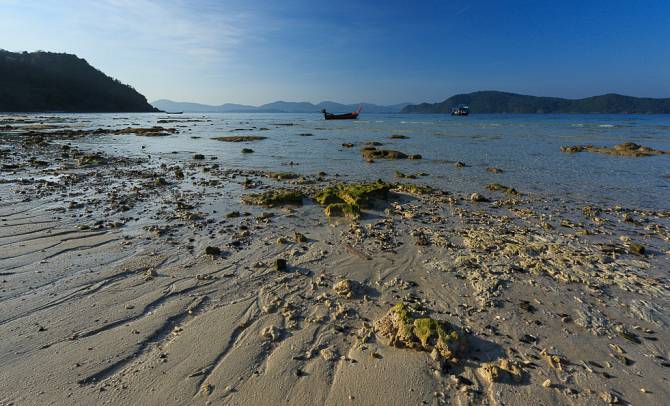
✑ The beach is unrecognizable after low tide, the water goes a good hundred meters
It is also important to remember that although the entrance to the beaches of Thailand is free, you still have to pay for renting a sunbed and an umbrella, despite the fact that the Thai authorities are actively fighting extortionists who rent sunbeds and umbrellas to tourists.
- The main income for Thais, who live surrounded by two seas, comes from fishing. In the waters off the coast there are many interesting species of fish: from tuna to mackerel;
- The Andaman Sea is inhabited by more than 400 species of fish; some are very rare;
- The South China Sea keeps the water temperature around 27 degrees all year round;
- Despite the fact that the Gulf of Thailand seems to be very safe, the South China Sea, of which it is a part, is often plagued by typhoons.
Thailand is washed by two seas, but at the same time, which sea in Thailand you would not choose, it will definitely remain a vivid memory in your memory and in the photo.
The Kingdom of Thailand is located in the southwest of Indochina. Also, its territories cover the northern part. Looking at political map, one can easily determine that the state borders on Laos and Cambodia in the east, on Myanmar in the west, and Malaysia is its neighbor in the south. But to the question of which sea washes Thailand, tourists who come to this country for recreation answer differently. Those who have been to Krabi, on the islands of Phuket or Phi Phi, claim that Andaman. And those who walked in the nightclubs of Pattaya or soaked up on the white sand stand their ground: the Gulf of Thailand of the South China Sea.
There is no less confusion with the larger water areas surrounding the tropical kingdom of Thailand. What sea or ocean surrounds its cordons? through the South China is connected with the Pacific. But it belongs to the pool. Each of these reservoirs has its own salinity, its own flora and fauna. The density and transparency, and even the color of the waves, also differ. The prevailing trade winds bring storms to the western coasts. This means that in the Andaman Sea there is more excitement than in the Gulf of Thailand. 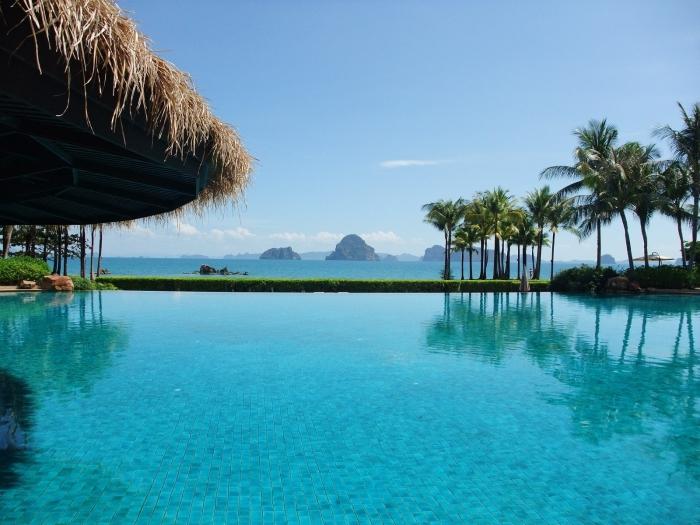
Which sea in Thailand is preferable for tourists going on vacation? If you are interested in sunbathing on wonderful beaches and swimming in warm water, then there is no significant difference. Due to the fact that the country lies in the subequatorial zone, the waters of all water areas of Thailand warm up to thirty-five degrees during the hot season. And even in the rainy season, when a large amount of heavenly moisture enters the seas, the water temperature does not fall below plus twenty-five. This causes the incredible wealth of the animal and flora coral reefs.
By the way, which sea in Thailand do snorkelers and divers prefer? Experts say that both areas are suitable for diving and scuba diving. The Gulf of Thailand has the advantage that the water in it is clearer than in the Andaman Sea. But it also has the disadvantage that its salinity exceeds the concentration of water off the western coast of Thailand. 
Again, purity and transparency are quite different concepts and often depend on the bottom. For example, in Pattaya, which is located on the coast of the Gulf of Thailand, due to the suspension of sand and silt. And in Krabi, the sea has a greenish tint due to a large number rivers, which also bring bottom sediments. If you dream of crystal clear and transparent water - which sea in Thailand to choose? Any! Just go to the islands, and during the dry period (December-April). Off the coast of Phuket or Phi Phi in the Andaman Sea, the water is azure and clear for 60 meters. The same can be said about the waves washing Koh Samui, Koh Phangan, Tao, Koh Kut, Koh Chang and other smaller islands in the Gulf of Thailand.
The Kingdom of Siam until the 80s of the last century was a tabula rasa for European travelers. But now tourism is the main article of the state income of the country. Infrastructure and services are rapidly developing here, and in recent years they are in no way inferior to the European standard. Therefore, no matter which sea in Thailand you choose, you will not be disappointed. On the contrary, you will want to return to this tropical paradise again and again.

